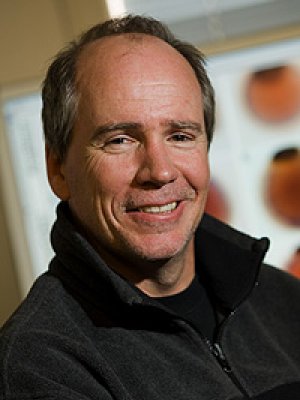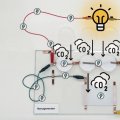
Despite its seemingly simple appearance, the humble sea sponge could have the ability to advance stem cell research, according to scientists working at UQ’s Heron Island Research Station and the St Lucia Campus.
Led by Professor Bernie Degnan, the research team found sponges had stem cells remarkably similar to those currently being trialled for use in regenerative medicine in humans.
“It turns out that sponges have features which we try to engineer,” Professor Degnan said.
“Basically the reason people are attracted to embryonic stem cells is because they have the potential to give rise to a whole lot of other cell types and, using sponges, we’re trying to figure out how that actually happens at the most fundamental levels.
“Making stem cells that can turn into any cell type in the body is like the Holy Grail in stem cell medicine.
"Sea sponges make stem cells with this capacity naturally every day.”
By identifying the similarities between sponge and human stem cells, the researchers may be able to reveal the most important features of stem cell function.
Professor Degnan said, because sponges and humans came from the same ancestor, any common features must have survived about 600 million years of evolution.
“Any features that we find in sponges and in humans, we can infer they existed before sponges and humans went their separate ways on the tree of life,” he said.
“The fact that these common features exist in sponges and humans must tell us that they’re really important because these things split apart 600 million years ago and the features are still here.
“We might be able to say that the common features and the common genes are the ones we should really be focusing on in terms of medicine.
"For example nearly 95 percent of all genes associated with human disease can be found sponges.”
Professor Degnan said influencing the direction of stem cell research was just the tip of the iceberg when it came to the abilities sea sponges possessed.
Many of the sponges’ other talents have formed PhD projects for students in UQ’s School of Biological Sciences.
“Sponges have the ability to fabricate glass from ocean sea water, so the genes basically have instructions to build very beautiful, pure glass,” he said.
“There’s a lot of biotech interest in the genes controlling that process because they do it an environmentally benign way whereas we make these things in an environmentally destructive way.”
However, none of the projects investigating those potential benefits would be possible without the entire sea sponge genome sequence, which Professor Degnan’s lab successfully mapped and will be publishing this year.
“We and our colleagues at the Joint Genome Institute (US Department of Energy) are the ones who drove this project which really puts us in the driving seat," he said.
"It is the very first genome project from a Great Barrier Reef animal, for that matter the first from an Australian marine organism.
“Everyone assumed that sea sponges were amazingly stupid animals but they are obviously mega-complex animals, and we’re trying to find ways to harness their abilities in ways that benefit humans.
“We’re sort of at the crest of a wave where genome-informed applications will become commonplace in the next decade, whether it’s in medicine, nanotechnology or marine science or in other applications.”
Media: Professor Degnan (07 3356 2467) or Penny Robinson at UQ Communications (07 3365 9723, penny.robinson@uq.edu.au)


